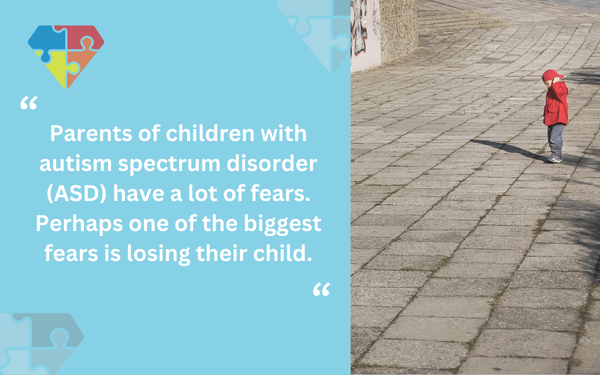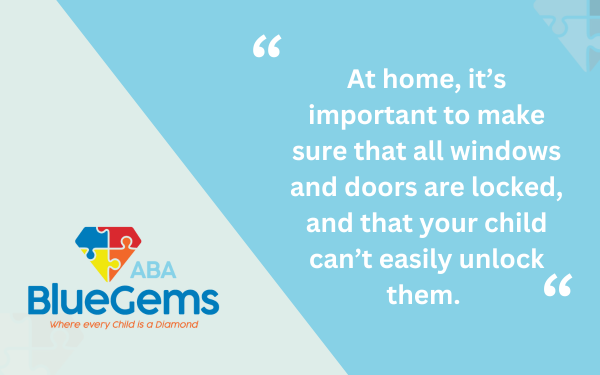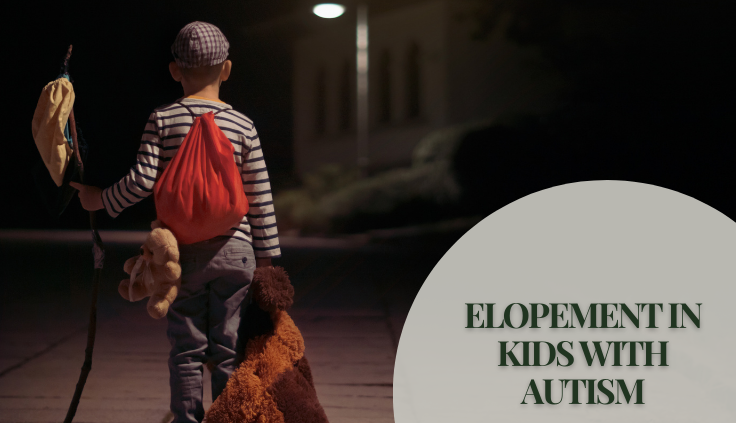Elopement in Kids with Autism
Parents of children with autism spectrum disorder (ASD) have a lot of fears. Perhaps one of the biggest fears is losing their child.
Unfortunately, this is a fear that many parents of children with autism have experienced. A study conducted in 2012, for example, found that 50% of children with ASD eloped at least one time after they turned 4 years old.
Those parents were likely terrified when they realized they had lost sight of their child. That’s why understanding elopement in kids with autism is so important for parents, family members, caregivers and other professionals such as teachers and therapists.
Below, we’ll discuss this issue in more depth.
Table Of Contents
What is Elopement in Kids with Autism?
Elopement is the act of wandering or running away from either parents or caregivers or from safe and secure locations.
Children tend to be very curious, regardless of whether they have ASD or not, making elopement a concern of any parent. However, it’s of particular concern to parents of children with autism.
There are many reasons why kids with autism might elope. Some of these reasons apply to their neurotypical peers, too, while others are more specific to them and their neurodevelopmental disorder.

One reason is that they may be interested in something they see. If they are in a toy store, for example, they might try to wander off or break free from their parents to grab a toy off the shelf that appeals to them.
Another reason is that some children with autism enjoy being chased or running. This could be a sensory situation, where they are seeking out the sensory input they get from eloping.
To that point, children on the autism spectrum often have sensory sensitivity issues. As such, another reason they might elope is if they are feeling stressed, anxious and/or overwhelmed by their current environment or situation.
If the environment where they are is noisy or if they are around a lot of people they don’t know, they might elope to escape the stress and anxiety that it is causing them.
Reasons for Elopement in Kids with Autism
How Can You Prevent Elopement in Kids with Autism?
No matter what the reason for it, elopement in kids with autism can be very dangerous. They can get lost, find themselves in a dangerous situation and become overwhelmed quickly once they realize there aren’t familiar things and people around.
Parents who have concerns about their children with ASD eloping can take some steps to prevent it from happening.
At home, it’s important to make sure that all windows and doors are locked, and that your child can’t easily unlock them. You may also consider installing alarms on windows and doors so you are notified in case one is opened.

There are also devices that you can have your child wear that will enable you to track their location. Some of these devices can even send you an alert if the child leaves a perimeter that you set.
It’s always important to make sure that your child isn’t unmonitored for very long. Life can get busy at times, of course, so one piece of advice is to set an alarm that reminds you to check in and see what your child is doing.
Following some of the principles of applied behavior analysis (ABA therapy), parents can also reward their child when they stay close and don’t elope. This could include extra praise or giving them a tangible reward such as extra time with a toy they love.
Elopement Risk Factors and Solutions
How Can You Mitigate Harm if Your Child Does Elope?
Even following some of the tips above might not prevent your child from eloping. This makes it so important to be prepared and try to mitigate harm as much as possible if they do elope.
By preparing for the possibility that it might happen, you can help yourself remain calm so that you can act with confidence and speed.
At home, you can notify close neighbors and other family members that it’s a possibility, and enlist some people to help you search for your child if they do elope.
You can also prepare a small booklet of information about your child and their preferences, which you can give to these people in your search team as well as local law enforcement. This could include a picture of your child, their name, your contact information, places where they might escape to and what helps them calm down.
It’s also a good idea to teach them to remember their name, address and telephone number so that they can recite them to someone if they elope and come into contact with someone looking to help. You may also consider attaching this information to your child’s clothing if elopement is a significant concern and/or in situations where it’s most likely to happen.
Blue Gems ABA Helps Reduce Elopement in Kids with Autism
Elopement is a serious concern of any parent, but especially for those of children with autism. Following some of the steps above, you can work to prevent elopement and mitigate the harm if it does happen.
At Blue Gems ABA, we help support children on the autism spectrum by administering ABA therapy. This science-based approach to learning helps children with ASD gain the communication and social skills they often struggle with, while also helping them modify certain harmful behaviors.
Our BCBAs can work with children with autism to reduce the instances of elopement, equipping them with tools, for example, to help them better deal with feelings of stress and anxiety that can commonly lead to elopement.
To learn more, please contact us today.




